Barrel cactus fruit, also known as muppets you can eat, or the Bert and Ernie of desert edibles. These can be delicious, but you need to know how to prepare them correctly. Read on and I'll tell you how it's done.
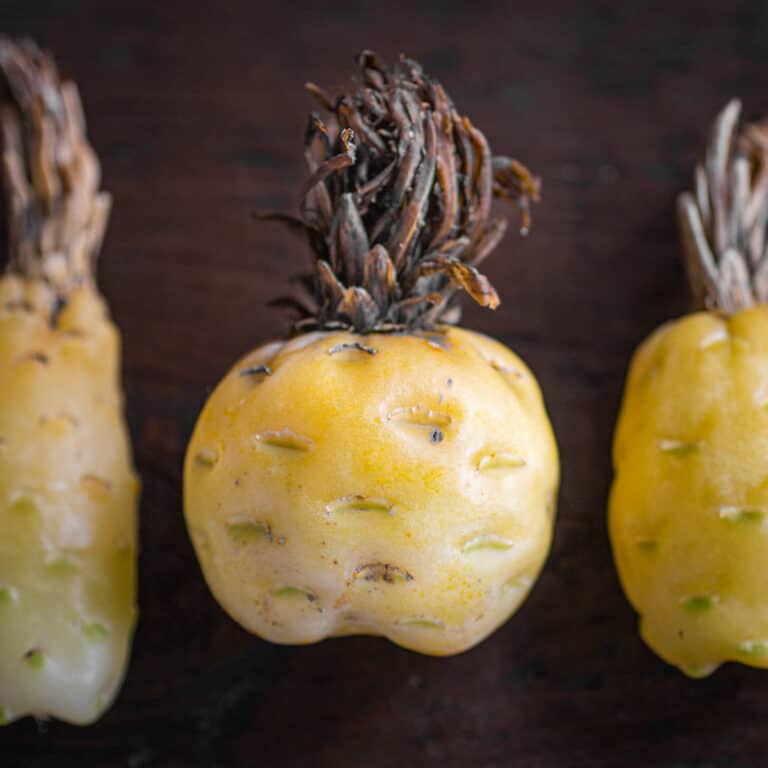
I've traveled to Arizona to see my grandparents just about every other year since I was a child. I always thought the concrete jungle of towns in the desert, and the different terrain was interesting-much different from Minnesota where I grew up, but it was more of just a funny-looking landscape as opposed to something I'd want to study. But now, I try to find edible "souveniers" on my trips, wherever I go, and I'm always on the lookout for new things to cook with.
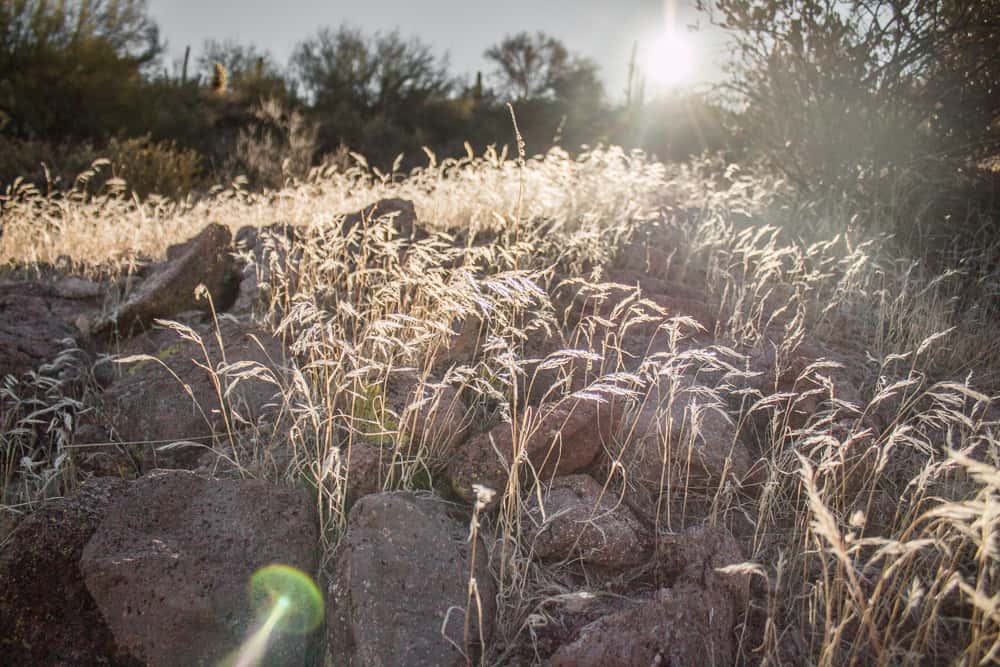
I usually go in the winter, say January or February, and, it's taken a few years to get up to speed. One year I tried to pick cholla buds, picked the fruit by accident, and got them way too green. Let me tell you, I was picking glochids out of my fingers for a week after that foraging crucible, and, unfortunately with the time frame I usually travel in, I probably won't be getting any cholla buds any time soon. I learn more every year though, and 2019 was the best yet, because of the barrel cactus fruit.
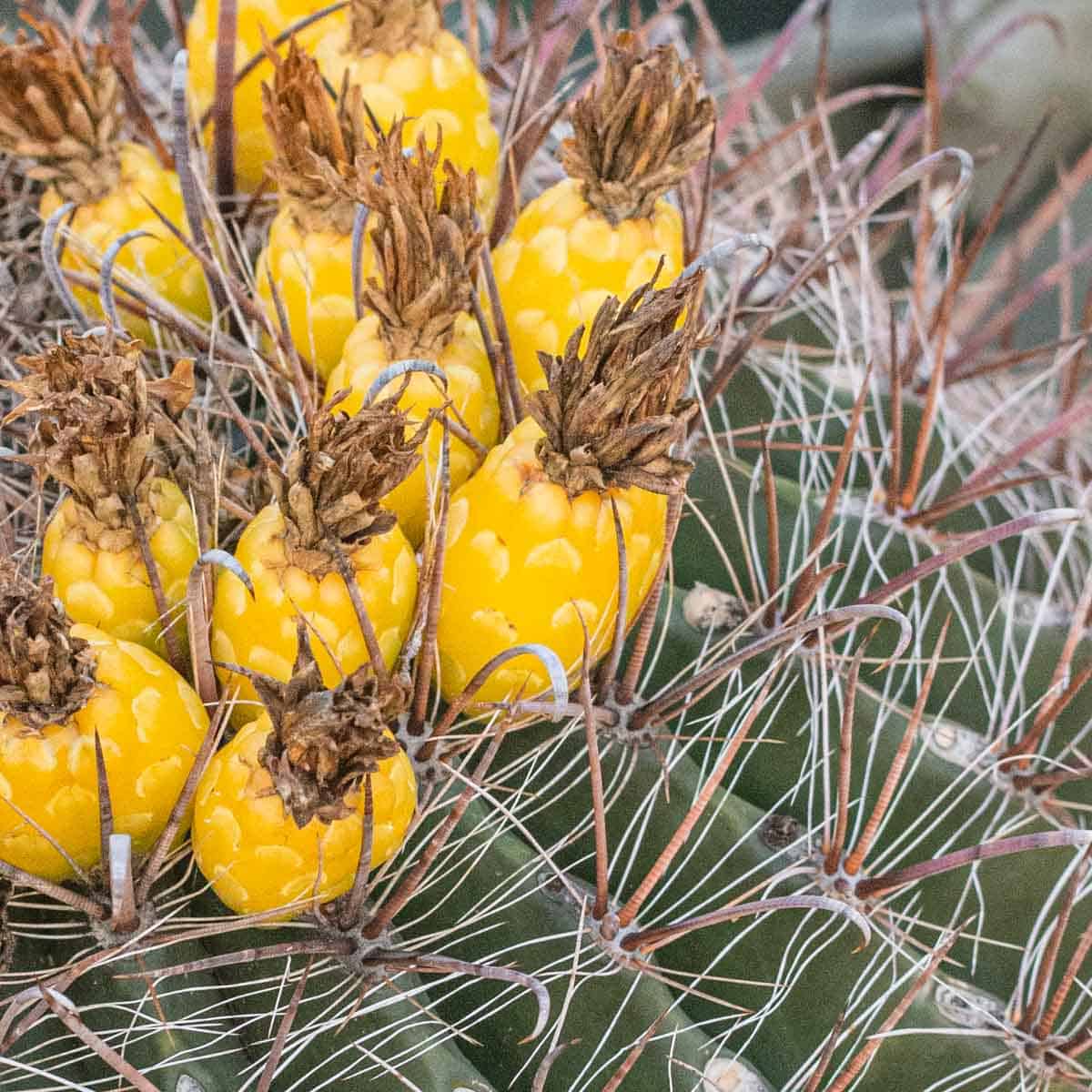
My grandparents had an idea to take a wild foods walk at a botanical garden with a local guide named Felicia, I was excited, as hands-on experience with locals knowledgeable about the terrain is speed learning compared walking around with a field guide.
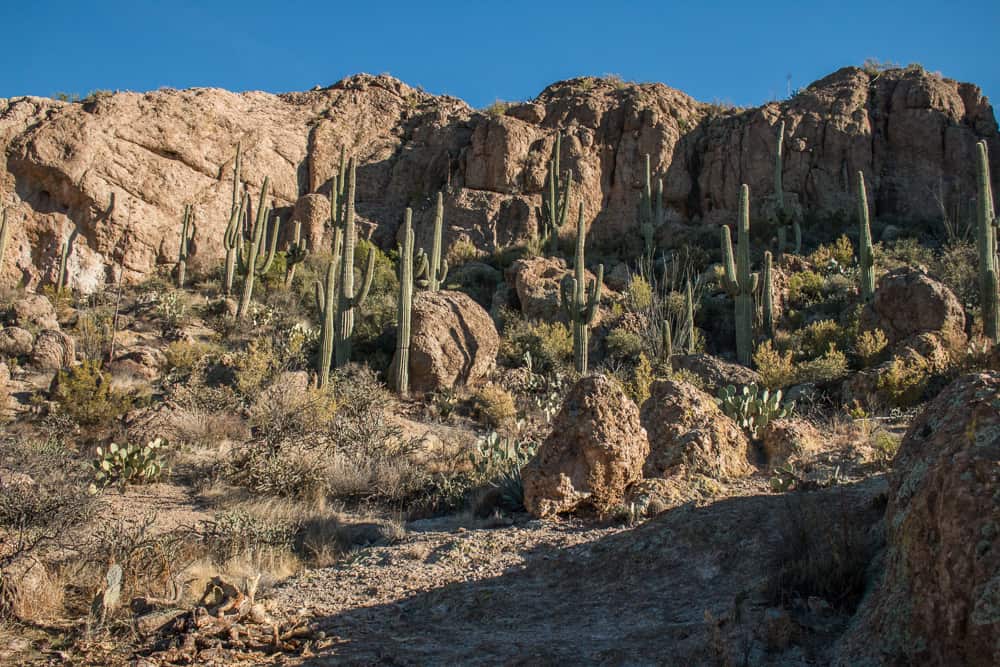
The best new thing I learned, hands-down, from Felicia were the barrel cactus fruit, which look a bit like mini-pinneaples. The fruits of barrel and other cactus have been used as food for eons, along with other parts, but the only edible cactus fruit I knew were the purple prickly pear sold in sugary jam in gift shops, and more recently the more obscure cholla buds. Someday, cholla, someday you'll be mine.
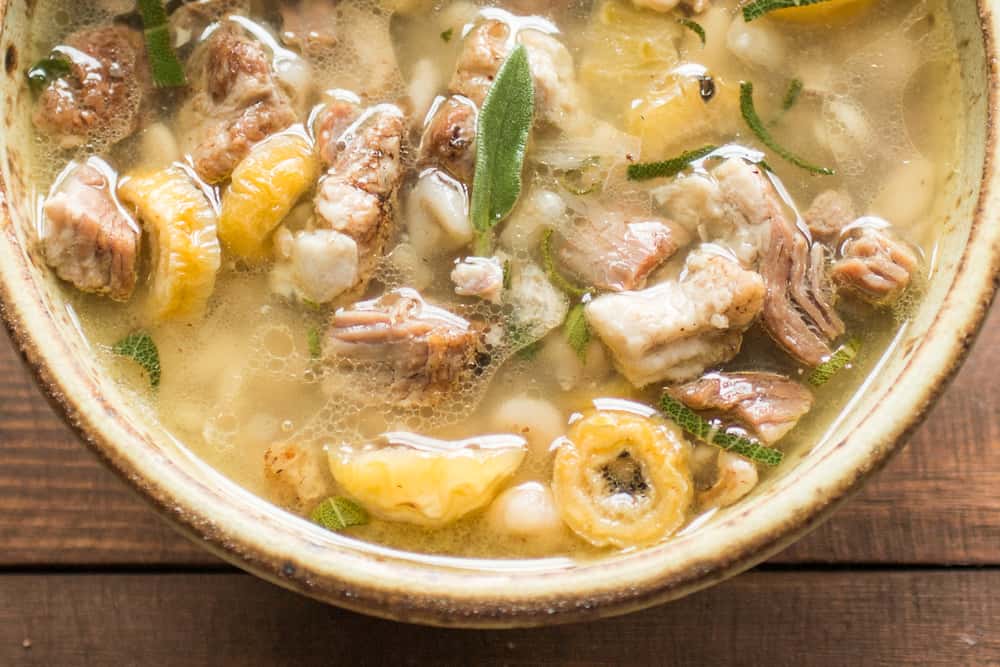
Barrel cactus fruit are glochid and spine-free
The barrel cactus has long, curved spines on the body but the fruit are, completely, 100%, spine-free. That means no gloves, no tongs, no burning to remove nasty glochids, nothing but pure, sweet, endorphine-rich free food picking to sate your inner caveman/cavewoman.
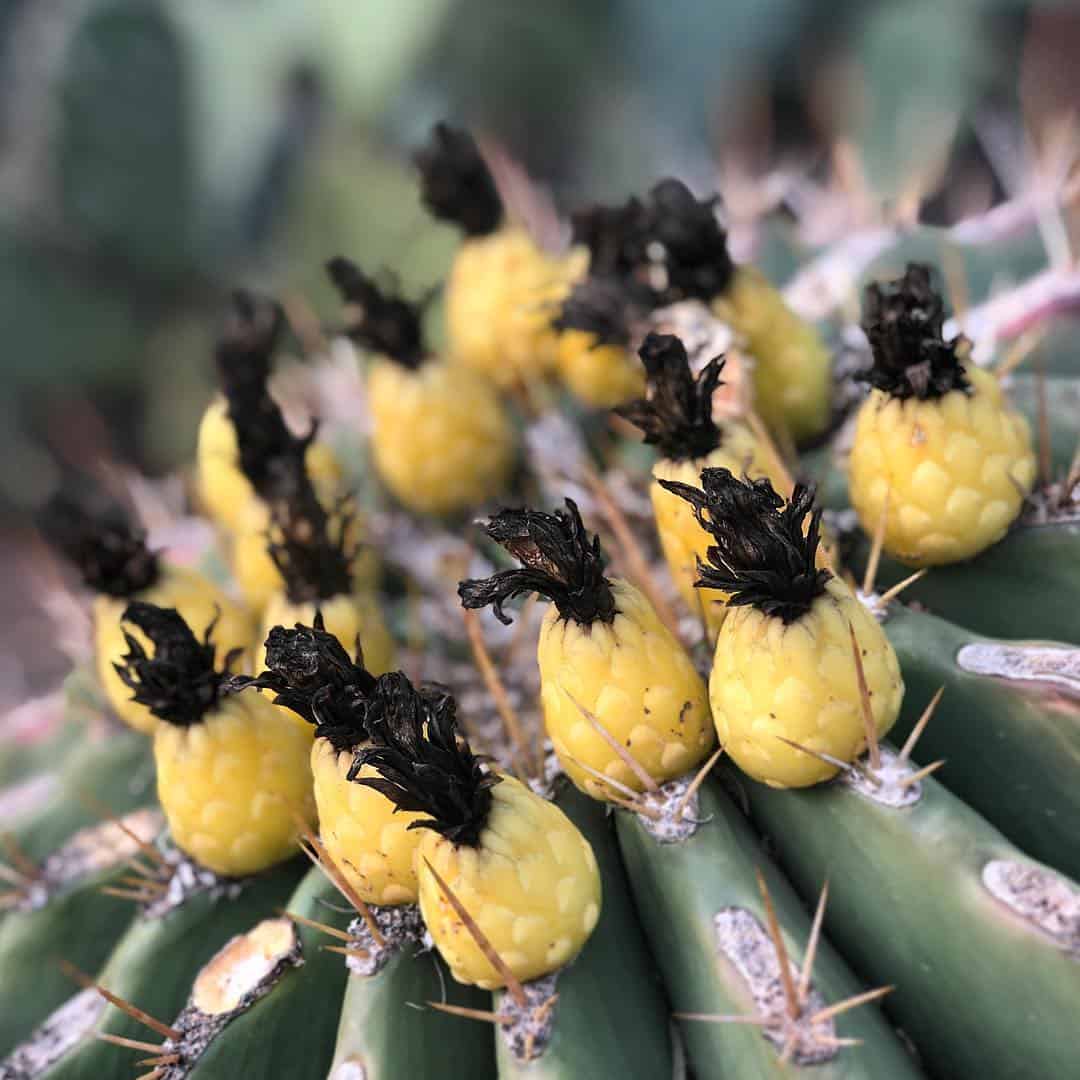
Looking in areas supplemented with water
The only tricky part for me was actually finding some cactus fruit in a place I could harvest them. At the botanical garden in January, the wee-pinneaple cactus fruit were everywhere. Excited after our walk at the garden, we went out hiking in the Superstition mountains the next day, only to get skunked, with zero cactus fruit.
Afterwords, at my grandparents house, wouldn't you know it, the neighbor's yard had a barrel cactus filled with the damn things. My grandparents called the neighbors, and, giddy like a kid with a new toy, I got to go over and pick some.
Later that evening we may have skimmed a few from other houses, under the cover of darkness. At least where I was, it seemed to me that irrigated places (lawns, etc) seem to fruit earlier than the wild places that wait for rain, but that's speculation on my part.
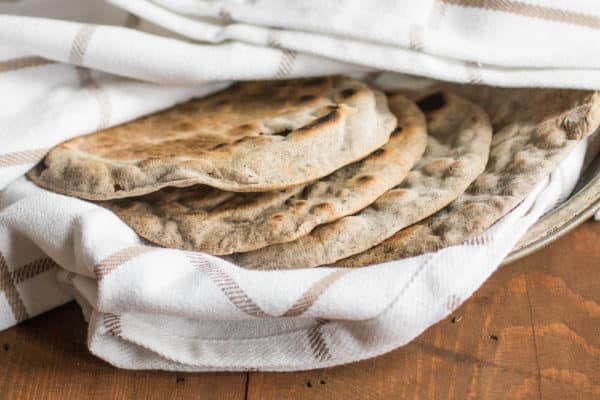
Cactus slime
The buds are really firm, solid things, and they took a luggage ride in a paper bag like champions. When I got home, I cleaned them, taking a little inspiration from my conversation with Felicia, who said she dried them and sometimes ground the inner seeds into a meal. Like other cactus parts i.e. paddles, fruit, the barrel cactus fruit are slimy, mucilagenous creatures, and will go toe-to-toe with Japanese Knotweed for most gooey thing I've picked.
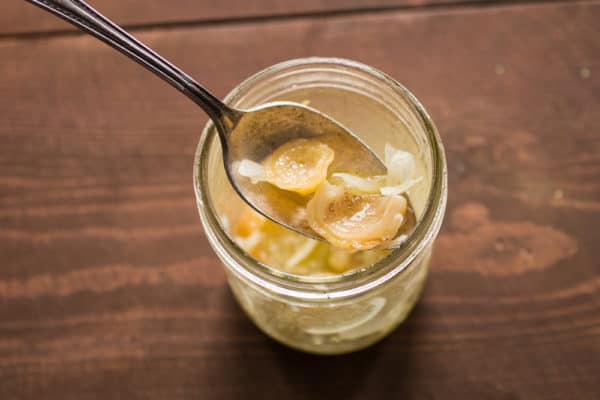
Cooked fresh, that mucilagenous goo will transfer strongly to water, say, if cooked in soup, and, I don't care for that, much better to grill them if you want to try them fresh, but know that fresh they're sour, as in more sour than sorrel. Felicia's advice on drying them was genius, since dehydrating, as well as being a safegaurd against a lot of gastro-intestinal distress issues with eating new things, can change the structure of mucilage and tame it's qualities, and the same goes for Japanese Knotweed, while we're at it, although I don't care for it much.
Preserving and cooking
The fruit
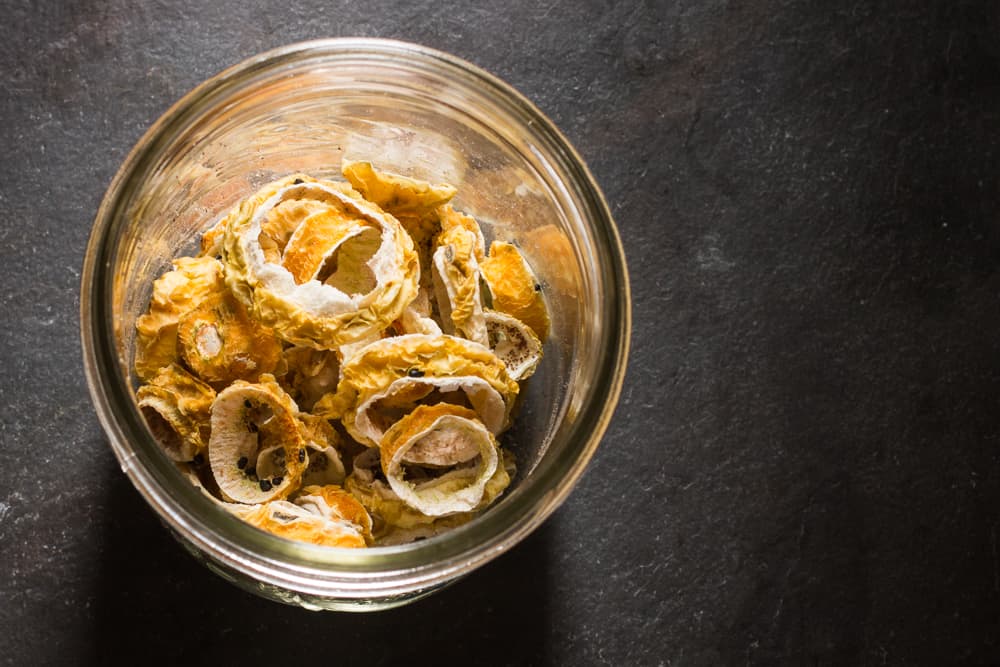
Dehydrating tames the cactus slime
The fruit itself won't yield as much as it looks like, since they little pinneaples are filled with black seeds. But, trust me, these things are worth going out to get. I cut some of mine into quarters, and some into rings before drying. Depending on what you do, either way could work.
Once they're dried they'll last a very long time in a jar. Some seeds will stick to the cut fruit, but are easily shaken/winnowed after drying and combined with the rest of the seeds.
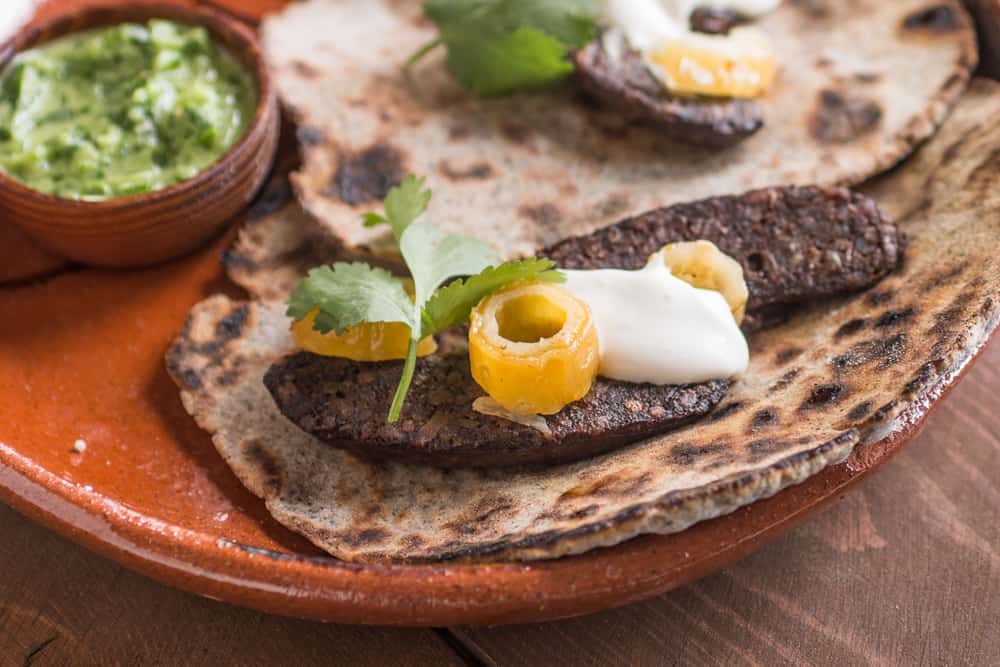
As far as cooking goes, there are a few recipes online, but most are just jams packed with a bunch of sugar, and personally I think that's a lazy method that will make anything palatable.
The best way I found to use these was in soup, or stew. To cook from dried, just simmer them away in your soup. They take a while to soften, but eventually they turn into little tart bites that gently flavor a cooking liquid, a bit like avgolemono soup.
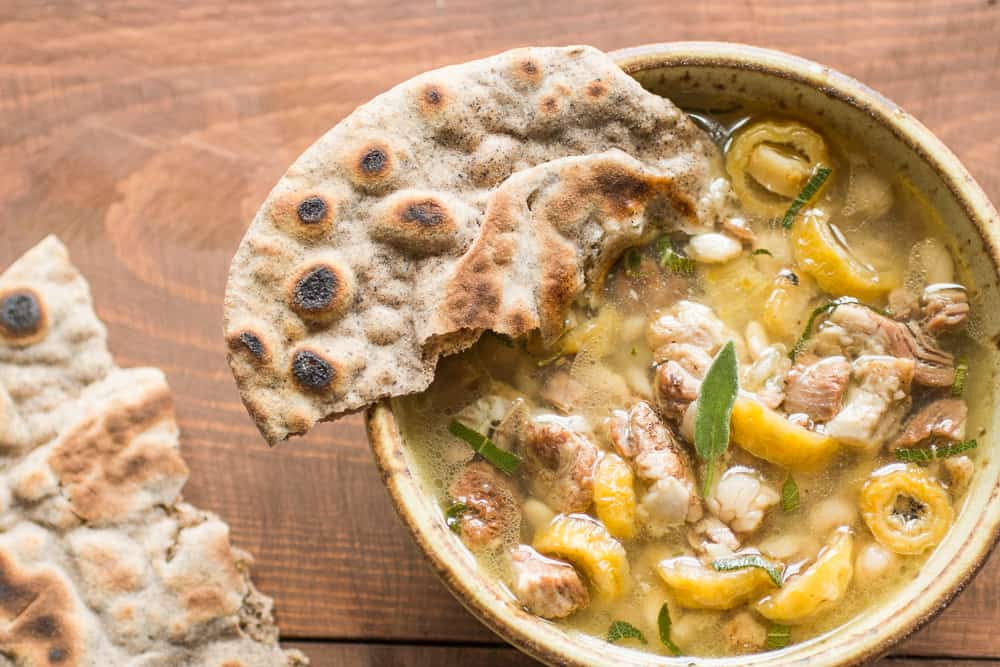
The best thing I made was a simple desert-inspired soup pictured above with goat, tepary beans, wood ash hominy, dried cactus fruit, and a sourdough flatbread made with the seeds you dip into the broth as you eat. The cactus fruit were the star of the show, and they are hands-down the best desert edible I've eaten to date.
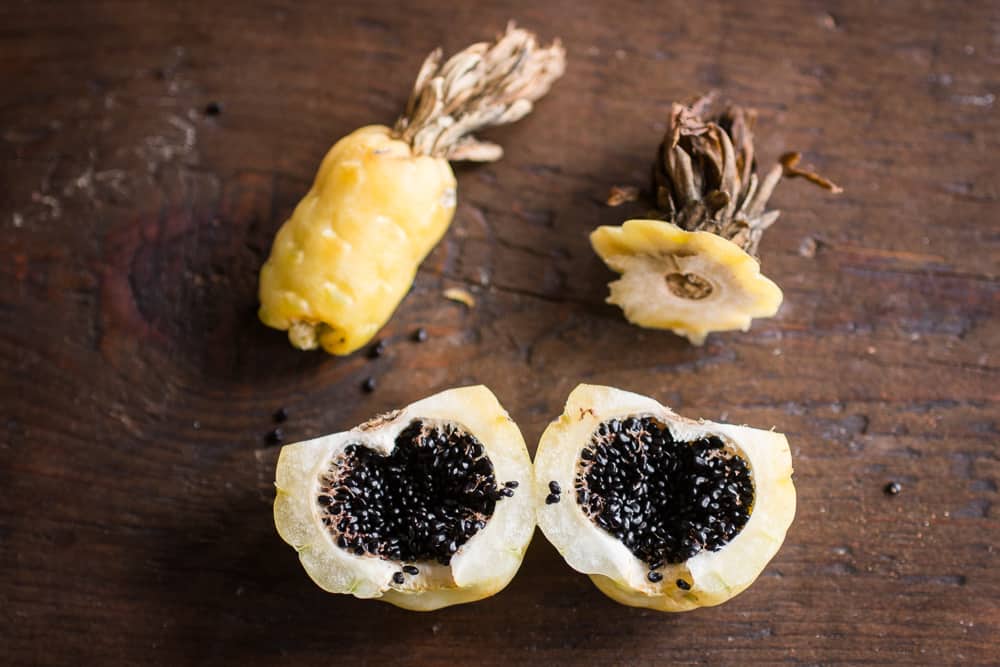
The seeds
I scraped mine out of the fruit, dried them, and forgot about them for a while. I wasn't expecting much, but as the seeds make up roughly 40% or so of the volume of the cactus fruit, I knew I should try doing something with them.
Fresh they're fine as a sprinkle or garnish. Dried and eaten raw, they're gritty and bland tasting. Felicia made a sweet chutney with green tomatoes and fresh saguaro cactus seeds that was excellent.
Toasting
Toasting the seeds was a gold mine, and they gave off a rich, nutty aroma, almost like a roasted root, or coffee substitute, almost. I'd describe them as half grain/half aromatic for cooking purposes, and they flavored a flatbread made with cornmeal I made really well, just make sure to grind the meal as fine as possible.
Recipe Ideas
As I said before, soups, broths, and stews are where these will shine the best. But as long as theyre rehydrated and cooked until tender, you can do all kinds of stuff with them. Here's a few things I did, or have in the chamber. If you've worked with these,
- Desert stew with goat, tepary beans, wood ash hominy, and cactus fruit
- Cactus seed sourdough flatbread
- Sweet chutney made with the dried, rehydrated fruit, garnished with the fresh seeds so the whole fruit of the plant is used.
- Rehydrated, cooked until soft, and marinated with onions and dried oregano (see tacos above)
- Fermenting to intensify the sour flavor, then dehydrating
- Dehydrated, then rehydrated and pickled to use as a sour garnish
- Dehydrated, then rehydrated and fermented to up the sour flavor as a garnish

Emily
If you're in town for cholla bud season, then you need to be aware:
Palo Verde tree seeds, when green, are delicious. They can be eaten raw or cooked, and used in anyway one might use edamame. They are green around the same time the cholla buds are out.
Alan Bergo
Hey Emily, thanks for the heads up. I'll be in AZ in March this year so I might be able to try some.
Sara
Hi-- I have a goldmine of these in my Tucson home. A local newspaper reported that you shouldn't eat the fruit in bulk, as it's high in a certain kind of acid. Doesn't look like you're doing that in these recipes. But I wondered if that's something you came across in your research? I'm foraging with a toddler in my home, so I'm a bit more cautious than most might be. She's eensy.
Alan Bergo
Hi Sara, so, one thing I don't discuss here is how the compound is denatured. Drying makes most things safer and easier to digest, but the big part here is that the dried cactus is soaked and the water discarded before they're added to a dish. This removes a lot of the acidic taste, as the soaking liquid (and the sour compound in it) are too sour for most palettes. The cactus is not consumed in large servings like a vegetable, it is only a garnish for soups, etc. Always consume (or serve) small amounts (a bite for a toddler is probably ample) to make sure it sits well with whoever is eating it.
Conor Bertrand
Hello! I just moved to the Marana side of Tucson and am wanting to get into foraging and cooking all the delicious desert goodness we have. I picked a bunch of barrel cactus fruit and separated the seeds from the fruit, but how did you separate the pulp inside from the seeds? I've read that the seeds would sink and the pulp would float in water, but that didn't really work too well.
Any ideas? Thanks!
Alan Bergo
Dehydrate them and the seeds fall out.
lila I davis
I had a bunch in my front yard going to waste. I just picked them, and processed yesterday. I dried a ton of seed which I will use in my baked goods. Then I peeled the flesh and boiled til soft, then candied as I would orange or lemon peel, also plan to use in baked goods such as cookies and sweet breads.
I've lived in this house 7 years and keep intending to use the fruits, but never do. Thanks so much for the confidence and inspiration to get out there and use natures resources.
Alan Bergo
Great ideas. I'm planning on candying some too, the natural tartness should be great like that.
carla
thank you for sharing this: after reading your stew recipe, I just turned the harvest from my yard into chili with everything elderly from my fridge: very tasty. I'd never have thought of that! I went online to look for some sweet preparation...
Can I thank you by sending you a package of cholla fruit? My yard has 4 fruit-bearing ones right now, one with yellow, 3 with green fruit.
Stone Crafter
I'm in Peoria by the Agua Fria river bottom and I'm thinking of planting the fruit to grow my own supply. Any thoughts on making my yard the winning organic supplier of barrel cactus fruit?
Alan Bergo
Hey, I only harvest these wild, so I don't know how much help I can be, but from what I know about harvesting them from my experience, the areas in the desert that had irrigation close by had earlier fruitings. That being said, I would put them in a dry place where you are, since Peoria is a lot different than AZ where I pick. Good luck.
Joshua
Thanks for the ideas. Just moved to Marana, AZ (near Tucson) and we have several barrel cactus with fruit. I want to use them, but I had no idea what to do with them.
Alan Bergo
You will love them. Use the stew for a template--much better than making them into sweet jam IMO.
Ellen
No barrel cactus here, too cold in Santa Fe. Cholla buds have evaded me, too. They ripen here in June (I'm told) and I'm not usually here then. We're delaying our summer departure by a week this year, hoping for buds!
Alan Bergo
Good luck with the Cholla, I'm always to early to get them in Arizona.
Jo
The best cholla buds are from the Staghorn Cholla. The dark purple/mauve colored one. April is the month here in Tucson they are available. We pick with tongs, spread out on a cookie sheet and hit with small map gas torch. Then onto a rinse in water a couple of times in a colander- grill on skewers- and pop into a balsamic brine to pickle in fridge- delicious! Glocids will stick to everything- we dedicate a set of tongs, cookie sheet & colander just for them!
Amber
If you are in Tucson, stop by the mission gardens. They have a lot of the native edibles and often sell cholla buds dried.
Have you tried devils claw? It's in season right now in late August
Alan Bergo
I haven't. I'm usually in AZ during the Spring.
Lee
What do you do with Devils Claw? My friend just complained about having them in his yard.
Lee Einer
About those glochids-
Very difficult to remove by means of tweezers.
Spread Elmer's glue (the white stuff) on the affected area and let it dry. Then peel it off and most if not all of the glochids should come with.
You can also use an adhesive tape like Scotch tape to remove them, but the glue is best.
Alan Bergo
This is some great advice. Thanks. Hopefully I can pick some cholla buds someday, and I'll probably need to use the elmers.